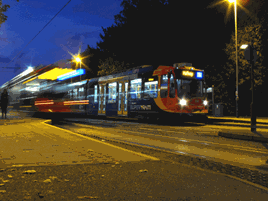And what difference will passengers notice?
“I would hope no difference, because if that’s the case we’ve done our job correctly! The new vehicles will be slightly different, but we hope people will see the same great service they are used to getting.”
What is clear is that people are talking long-term. The initial pilot is only for two years, but there’s a clear desire for it to work commercially and potentially lead to trams heading out even further along the Don Valley, offering more communities the seamless commute. So what will success look like?
“Success is three things,” says Davenport.
“One: technically. Does it work? It hasn’t been done before - we have to prove it is safe and works for the passenger.
“Two: more locally, is the new service commercially viable so we can continue beyond the pilot period?
“And three: in the longer term for South Yorkshire, where else can we use it?”
And are those things the SYPTE’s call?
“In terms of the local aspects it is our call. In terms of deploying elsewhere, that would depend on funding. Other parts of the UK are looking at this technology and will want to use it if it is successful.”
It’s not hard to imagine a bigger picture. Relatively short stretches of brand new light rail line, which connect to heavy rail lines, could take tram-train almost anywhere.
Doncaster Airport is right next to the line to Gainsborough. How about a new half-a-mile spur to the terminal door, linking all the way back to the centre of Sheffield? Yes, electrification and no doubt other physical considerations would be required, but tram-train shows us the way. And which other cities and tram systems might be able to make new connections? Could it be a way to revive lost branch lines with lighter infrastructure?
Supertram is in optimistic and upbeat hands. Says Bilby: “I’d like to see an extended network. It’s certainly been a real boon to Sheffield, having that rapid transit of large volumes of people in and out on the tram system. To extend that benefit within South Yorkshire beyond Rotherham, into other areas, would be fantastic. I think people would see that benefit and appreciate it.”
Twenty-one years on, after initial stumbles, the trams have woven themselves into the fabric of the city. With regular feeder buses already helping to extend the network tendrils, new generations growing up in the ‘Steel City’ will automatically consider how they can use it to get around. As it enters its next decades, and having shown us one transport revolution, it is on the cusp of doing it all over again.
Read part one of the Sheffield tram-train feature.
- This feature was published in RAIL 789 on December 9 2015















Login to comment
Comments
No comments have been made yet.